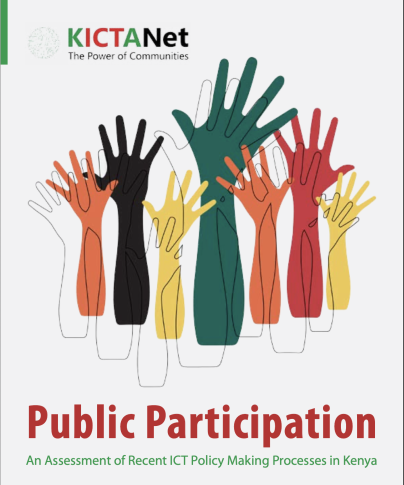
While the principle of public participation is listed under Article 10 of the 2010 Constitution of Kenya as one of the national values and principles of governance, the approach taken by state bodies in the information and communications technology (ICT) sector to facilitate public participation has been varied.
This report assesses the extent to which the public participated in three recent ICT policy and law-making processes.
These include the National Information Communications and Technology (ICT) Policy, 2019, the Computer Misuse and Cybercrimes Act, 2018, and the Data Protection Act, 2019.
While the principle of public participation is listed under Article 10 of the 2010 Constitution of Kenya as one of the national values and principles of governance, the approach taken by state bodies in the ICT sector to facilitate public participation has been varied.
Despite progress in the past decade, such as the promotion of greater stakeholder engagement, better documentation and information sharing, hosting public county meetings, and making stakeholders’ inputs on publicly accessible platforms, challenges still remain. Generally, the government is yet to put in place a holistic, multi-disciplinary and multi-stakeholder mechanism for public participation.
For example, the Public Participation Bill of 2019, which could provide the framework for effective public participation, has not yet been enacted. Specifically, the three ICT processes were marked by cross-cutting inconsistencies in the interpretation and application of public participation.
State agencies failed to:
-
Inform the public with objective, baseline research to enable stakeholders to understand the problem or need to be addressed by a process with proposed solutions.
-
Consult stakeholders and provide them with sufficient time to contribute to public calls for input or give feedback on the consideration of stakeholder submissions.
-
Involve stakeholders to contribute to the processes from the beginning, avail equal opportunities for different stakeholders to contribute to the processes or avoid duplication of processes.
-
Collaborate with stakeholders in decision making to ensure consensus and balancing special interests against stakeholders’ inputs, evidence and facts.